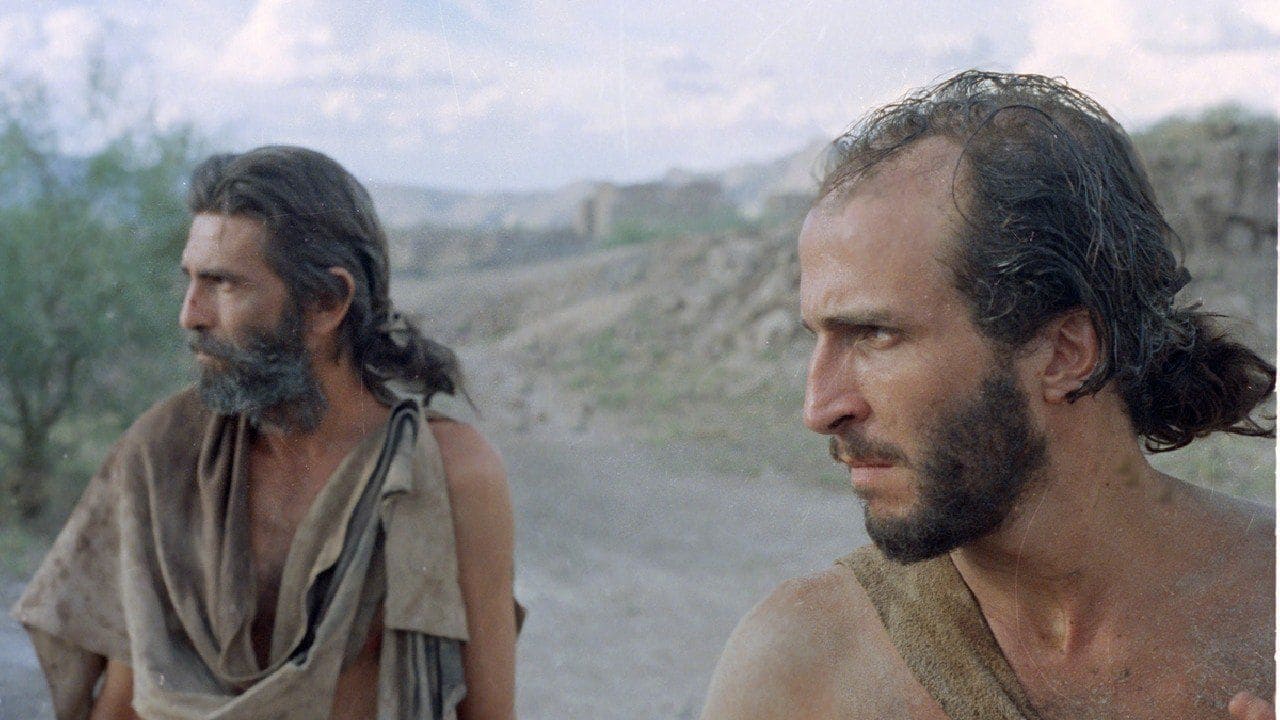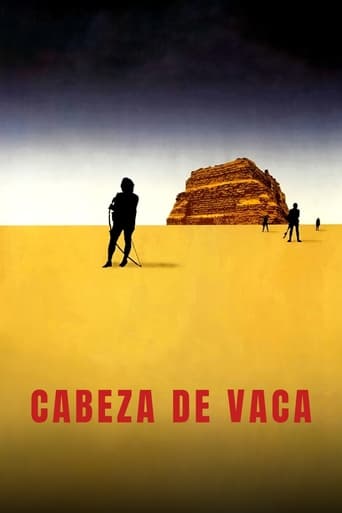

What makes it different from others?
... View MoreGood concept, poorly executed.
... View Moreeverything you have heard about this movie is true.
... View MoreThis is a small, humorous movie in some ways, but it has a huge heart. What a nice experience.
... View MoreDirector/co-writer Nicolás Echevarría profoundly missed an opportunity to make this otherwise flawed film memorable by failing to let the sub-titles (in English for this viewer) mirror de Vaca's gradual understanding of the language he learned as an 8 year captive. The indigenous people were shown to be of a different-than-Western civilization; extremely different in cultural day to day living. But he learned how to speak and hear them, understand them. By sharing his gradual ability to think like them, with us the audience, we too could have seen their being 'foreign' gradually change into kinship . This would make the ending of the movie, as the Spanish conquistadors force the people into slavery, misery and premature death, much more effecting. As it is it's solely de Vaca's humanity that cries from the screen instead of the humanity of the people we should have learned to know as individuals, as well as his.
... View MoreThe conquest of a new world on behalf of the Spanish crown in the 16th century was built on atrocity and deceit, fueled by lies and rumours, greed and ambition. But also failure and anguish. Cabeza de Vaca is one such tale of failure and anguish. Cabeza, acting as the treasurer for Captain Narvaez's expedition, is shipwrecked off the Florida coast and picked on by natives. The historical details of his journey and gruelling subsequent life under capture are skewed though, the movie does not make attempts at historical realism, it goes for the primitive and spiritual. Or this is how it would be if the soldiers on the raft got rid of Aguirre and drifted further downstream to wash up in Herzog's Cobra Verde and become slaves to a shaman and his armless midget helper.The world we're shown is at once horrible and wonderful and director Etchevveria photographs it as both. For big swathes of time the movie is without dialogue and we're crouching on the dirt as the natives perform elaborate rituals that mean nothing to us. The words are lost in the translation but the ceremonial aspect remains. Bodies covered in mud, painted blue and ghastly white, adorned with feathered headpieces, witch doctors making voices and calling out to something, Cabeza de Vaca, both movie and protagonist, observes it all with a half-mad stare and twitching hands.When the survivors of the expedition reach Spanish hands again, one of them exalts the audience with tales of golden cities in the north and shaman potions that give the drinker the sexual prowess of 20 mules. Coronado traveled as far north to New Mexico to discover the 7 Cities of Gold probably on one such impossible tale recounted around the fire by drunken conquistadors desperate to believe. The will to empire is not only the pursuit of the mad and the hopeless, the ambitious and the greedy, but also in itself the result of myth and poetic fabrication, a self-fulfilling prophecy that becomes true by the simple fact it has been pursued. The biggest flaw in the movie is the protagonist. Every time Juan Diego opens his mouth or gesticulates the results are cringeworthy. Manic ferocity came natural to Kinski because he was manic, Diego on the other hand chews scenery like he's playing this for the theater. When he's lost in his own thoughts and acts mad, the results are significantly better.A filthy gaunt figure dressed in rags is climbing on ragged redrock terrain, walls of rock rising on all sides, he can barely traces his steps but there's nowhere to trace them to, he's a strange man lost in a strange violent world that makes no sense - the movie is his anguished cry in the wilderness echoed all around him like the wilderness is crying back at him. The final image is an ecstatic metaphor, like something Herzog would have improvised, and it's a stunning way to close the film.
... View More"Cabeza de Vaca" may be viewed as a surrealistic rumination on the nature of early contact between Europeans and North American Indians, but it has very little to do with the actual narrative of events as presented to Charles V by Alvar Nunez Cabeza de Vaca in his 1542 report.Viewers who may wonder about the rapid transition from Florida to the Southwest in the movie should realize that the opening scene depicting the separation of the rafts of Captain Narvaez and Cabeza de Vaca took place off the coast of Louisiana WEST of the Mississippi more than a year after their first landfall in Florida, despite the meager information provided in the opening credits. Cabeza de Vaca is also presented as Treasurer to the King of Spain, when in fact he was merely treasurer of that particular expedition.And although the long sequence early in the movie showing Cabeza de Vaca's period of slavery to the Indian sorcerer and the armless dwarf is quite interesting to see, there is no corresponding incident in the explorer's writings. C de V did report on a brief period of enslavement, but that is all. No sorcerer, no dwarf.Similarly, the bond created between C de V and the young Indian who he cures by removing an arrowhead is not in the original narrative, but rather a conflation of several different episodes from the journey.The key scenes of capture and near-murder by the blue-painted Indians are wholly the creation of the screenwriter.The movie has an inconsistent approach to nudity. Most of the Indian tribes encountered by C de V went entirely naked during the warm season, but are almost always shown with at least some kind of loincloth. However, during the "blue Indian" sequence and later, when the survivors are taken in by friendly Indians for a while, full nudity is present among the females, and even full-frontal on the part of an Indian girl who offers herself to one of C de V's men. Meant to be tittilating? I don't know. It wasn't. In C de V's report, he notes a number of times that he and his Spanish companions were, for a long period, "naked as the day we were born," but there is no male nudity whatsoever in the film.So what is accurate? The suffering endured, for sure, and the apparent success of the Spaniards in "curing" Indians through the power of God. The arrival in Mexico toward the end, and the capture of the Indians there as slaves. That's about it.Nevertheless, the film holds the attention throughout, and the final scene of Indians bearing the enormous silver cross through the desert is quite arresting.6 out of 10 for me.
... View MoreUtterly fascinating movie that doesn't go for the Hollywood ending (ala "Dances with Wolves"). Purportedly from the diaries of Cabeza de Vaca, a treasurer for Charles the Fifth of Spain, the film goes from the brutal realism of war to a mystical tour of Indian life to the sad reality of Spanish conquest. This film is a must-see.
... View More